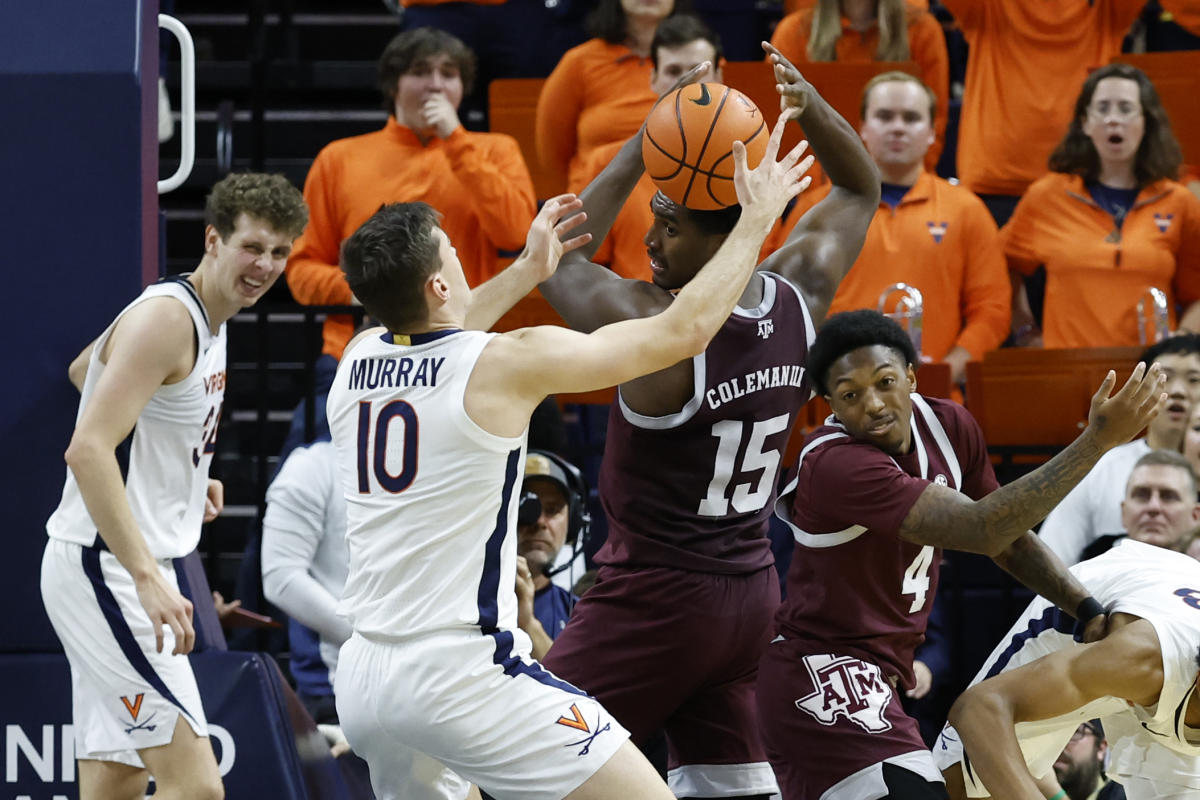Sports talker Clay Travis proposes an intriguing basketball matchup between the reigning WNBA champions, the Las Vegas Aces, and a boys high school basketball team that has won their state championship (although Travis does not specify which state or team he has in mind).
Travis, confident in his prediction, wants to place a hefty wager of $1 million on the game. If the Aces emerge victorious, they would claim Travis’ money. On the other hand, if the boys manage to secure a win, they would be rewarded by the Aces (an interesting question arises as to whether this payment for the boys can be considered NIL money). Travis boldly asserts that the boys would triumph by a margin of over 30 points.
This proposition by Travis holds merit as it is highly likely that this game would draw significantly more attention and generate more revenue than any WNBA game to date. Its potential as a pay-per-view event is unparalleled, promising an enormous buy rate.
However, despite the allure of such a matchup, Las Vegas would have no incentive to participate. The Aces stand to gain nothing from winning against a team of high school students, while a loss could tarnish the reputation of women’s basketball, creating a narrative that suggests the women’s game is inferior.
Travis expertly manipulates the situation to provoke discussion and reflection. Rather than tiptoeing around the issue of gender equality in sports, he recognizes the necessity of confronting it head-on.
If the game were to take place, the boys would likely emerge as the victors. Yet, they may also find themselves intimidated by the high-stakes environment, offering the women a glimmer of hope. However, if the boys represent a state known for its basketball prowess, and they possess several highly-recruited athletes from major colleges, their superior athleticism, strength, and speed would undoubtedly give them the upper hand.
I had the opportunity to witness the 1976 Class AAA state champions, a team called Fifth Avenue, which showcased future Pitt star Sam Clancy and several other Division I recruits. Their talent and dominance were so exceptional that they would have triumphed over any U.S. women’s Olympic team by a staggering 30-point margin.
A precedent exists in a different sport: In 2017, an under-15 boys soccer team from Dallas handily defeated the U.S. women’s national soccer team by a score of 5-2.
Once upon a time, a game like this would have been purely entertaining. However, in the current landscape, it would be fraught with seriousness, attracting accusations of sexism and misogyny at every turn. God forbid if one of the boys were to commit a hard foul.
While the reputation of women’s basketball would be at stake, it is essential to recall how tennis icon Billie Jean King, at the age of 29, fearlessly took on 55-year-old Bobby Riggs in a highly-publicized match at the Houston Astrodome in 1973. Riggs, a former Wimbledon and U.S. Open champion, had previously defeated the women’s No. 1 player, Margaret Court. The King-Riggs match generated immense hype, with 30,000 spectators in attendance and a television viewership of 90 million. Ultimately, King triumphed with a decisive victory of 6-4, 6-3, 6-3. Imagine the impact on women’s tennis had she lost? The event itself and its build-up provided incredible entertainment.
King embraced the risk, albeit partially due to Court’s loss. Nonetheless, her incredible courage was never in doubt. It is a risk that the WNBA seems unwilling to take.
However, the WNBA should actively seek increased visibility. Despite having major cities, prestigious arenas, and national television coverage, the average live attendance for the WNBA is roughly similar to that of the American Hockey League. The WNBA’s potential for growth is enormous compared to the AHL, which lacks the same resources and reach.
Related
• Derrick Henry presents a significant challenge for the Steelers’ inconsistent run defense
• Patrick J. Rooney, the son of the late Steelers patriarch Art Rooney Sr., dies at 84
• Forward Jeff Carter remains confident amid the Penguins’ recent struggles
Striving for equality and declaring it are worthy endeavors. However, it is crucial to recognize that forcing individuals to engage with content that does not pique their interest is an insurmountable challenge.
Tennis legend John McEnroe faced backlash when he expressed his belief that women’s tennis superstar Serena Williams would rank “around No. 700” if she competed against male players. The response was an eruption of widespread outrage, with Williams positioning herself as the victim, leading McEnroe to backtrack timidly.
An ideal resolution to this dispute would have been for Williams to face off against the men’s No. 100-ranked player, settling the debate on the court. However, it is much simpler to make proclamations without backing them up through action.
Perhaps someday, the NBA and NHL will become co-ed sports. While this may not occur in my lifetime, the inevitability of this change is clear. Mandated equality would necessitate the presence of at least two female players on the court or rink at all times. In the case of hockey, physical contact would likely be eliminated.
It may seem laughable now, but in due time, even the NFL could transition to flag football.

Rachel Adams is your WNBA insider, delivering comprehensive coverage of women’s basketball. With a commitment to highlighting the talent and achievements of WNBA players, she provides game analysis, player profiles, and inspiring stories from the league.




:no_upscale()/cdn.vox-cdn.com/uploads/chorus_image/image/72931262/usa_today_21973134.0.jpg)


